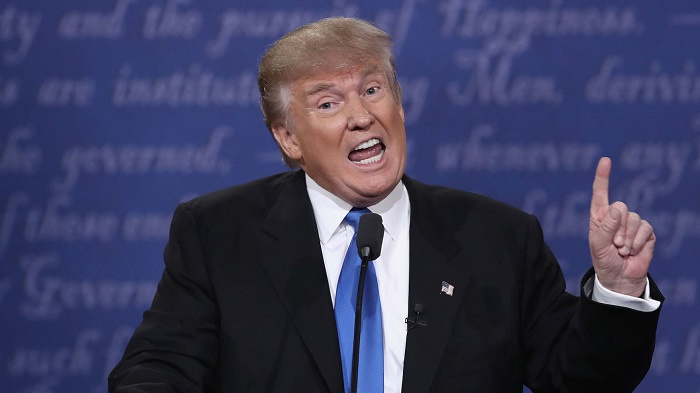Trump's Strategy towards Iran Doomed to Fail

Afsaneh Reshad*
Many US politicians have adopted hostile policies toward Iran since the victory of the Islamic Revolution in 1979. With Donald Trump comping to power, these policies have become more hostile.
The US withdrawal from the multilateral Iran nuclear deal, formally called the Joint Comprehensive Plan of Action (JCPOA), and imposing stiff economic sanctions on Iran by accusing it of sponsoring terrorism are some such hostile policies – for which the US has failed forge an international consensus.
On October 4, 2018, the US government unveiled its National Strategy for Counterterrorism document that puts focus on Iran. The new strategy is the first issued since 2011 under former US president Barack Obama.
Although these two documents, published in a span of seven years, have many similarities, they have fundamental differences as well.
Iran was cited only once – on the penultimate page – of the 2011 counterterrorism strategy as an “active” state sponsor of “terrorism” [sic].
But the current document, which mentions Iran ten times, shows how the Trump administration has dramatically put Iran at the center of US concerns.
“We continue to face threats from Iran, the most prominent state sponsor of terrorism, through its global network of operatives and its ongoing support to an array of terrorist groups,” the new document claims.
Most parts of the document, though, have been developed based on unfounded allegations against Iran.
It is clear that the US considers Iran as the main obstacle impeding its hegemonic policies in the region.
Psychological warfare campaign
Washington has now tried to wage an economic war against Iran to make it difficult for ordinary people to meet ends meet. And then, through a psychological warfare campaign, holds Iran’s policies and officials accountable for the deteriorating economic situation.
Undoubtedly, recognizing the enemy’s schemes, policies, strategies, tactics, and techniques will be a necessary step to foil them.
The new US strategy for counterterrorism has been made up from six major steps that each has its own “priority measures.”
Step one: tracking terrorist threats to their origins
Step two: cutting off terrorists’ financial and logistic supports
Step three: modernizing and integrating the US resources to counter terrorism and protecting the country
Step four: protecting the US infrastructure and strengthening preparedness
Step five: stemming extremism and terrorists’ hiring
Step six: strengthening the capacities of US international partners to counter terrorism
Different US governments have created, strengthened and dispatched terrorist groups to corners of the world so as to advance US grand strategies by destabilizing other countries and abuse the notion of fighting against terrorism.
Publishing such documents can be seen in the line of US diversionary tactics to clear its name by accusing the others – which shows the hypocritical nature of some of the US politicians during the past decades.
Currently the Trump administration has resorted to illegal sanctions to achieve on the two following goals: First: To force the Iranian government to give in to some of US demands and return to the negotiating table for reaching what Trump calls a more comprehensive deal.
The second option is to tighten US economic sanctions on Iranian people in order to drive a wedge between the people and the establishment. The public pressure would then make the establishment to return to the negotiating table and give in to the majority of the US demands.
It is worth mentioning that the US, in line with its policy of maximizing pressure against Iran, will strive to project Iran as a threat and make the false impression that this threat has to be countered.
The US list of states sponsoring terrorism is drawn up as a tool, rather than based on reality, to be used by the US to exert pressure on countries which are against its policies.
Meanwhile, analyzing the statements of the former and current officials of the US administrations after the Trump’s withdrawal from the JCPOA indicate that Washington faces certain challenges in imposing crippling sanctions on Iran.
The US has created an Iran Action Group, headed by Brian Hook, to come up with plans to counter these challenges.
Hook underlined two main missions for his group; organizing and coordinating US organizations within the US and also diplomatic consultations with other US partners for imposing sanctions on Iran.
The US strategy is that the sanctions on Iran would become biting before the reimposition of its oil sanction on November 4.
The Iranian government should try to explore all international venues to make the sanctions ineffective or less biting by using an active diplomacy and a ‘strategic patience’.
Although the enemy has staged an all-out campaign against Iran, what should not be ignored is that the permutation of forced on international level has undergone serious changes after the JCPOA was signed.
Before the conclusion of the JCPOA, some of the sanctions imposed on Iran had the backing of the UN, the then US administration had created a consensus against Iran, Washington had amicable and good relations with many partners. But, today, the sanctions are unilaterally imposed on Iran at a time when, due to Trump’s measures policies, US relations with many partners, including those in Europe, is conflictual.
The sanctions will not have the same effect that they had in the past. Trump will not achieve its goals.
* Afsaneh Reshad is assistant professor at Islamic Azad University.

